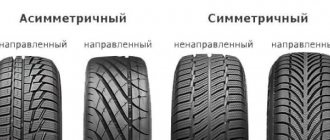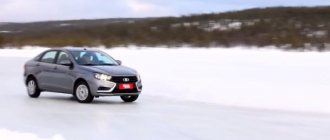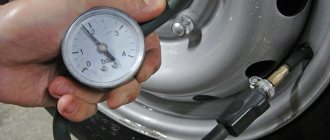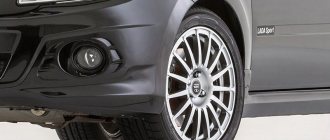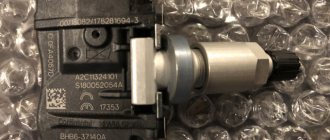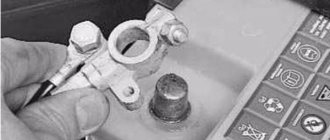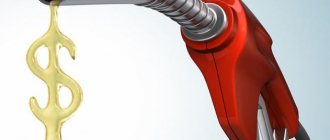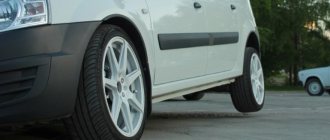The importance of maintaining the correct pressure in Chevrolet Niva tires is one of the most underestimated parameters by car owners. This is important because the pressure maintains a range of performance characteristics:
- car control stability;
- ride stability;
- braking distance within the design;
- specified trajectory of movement;
- uniform wear of the treadmill, due to which the service life of the tires is maintained at the proper level;
- integrity of the side surfaces;
- volumes of fuel consumption not higher than those specified in production.
The Niva manufacturer recommends that the pressure on both the front and rear axles reach 1.9 bar.
The recommendation applies to the sizes of 15-inch tubeless tires 205/70, 205/75 and 16-inch 215/65. In the case of off-road driving, factory recommendations allow the indicator to be reduced to one and a half bar. In some cases, car owners themselves increase the pressure to 2 or 2.2 bar for driving on the highway. The manufacturer indicates that pressure above two makes the ride harsher and less comfortable.
Why measure tire pressure on Niva Chevrolet
Before you start measuring tire pressure, you need to decide on the units of pressure measurement. The most common are bar and atmosphere (atm.). Many people consider them identical, but this is not entirely true. If we take one normal atmosphere (760 mm Hg) as 1, then 1 bar will be 1.0133 atm. The difference of less than 2% is caused by the peculiarity of the mmHg conversion. Art. to Pascals in the SI system. All modern pressure gauges are marked in bars or atmospheres.
Timely monitoring of tire pressure affects:
- stability of straight motion;
- maximum braking distance of a car;
- stability and safety of control in extreme conditions;
- uniform tire tread wear;
- eliminates damage to tire sidewalls and cords;
- reduces fuel consumption at all speeds.
The pressure in Niva Chevrolet tires may be too low or too high . The behavior of the car on the road differs from this value as follows.
Important! The nominal level for wheels with landing radius R15, R16 is taken to be the factory setting of 1.9 bar.
Blood pressure is higher than normal . The car's ride becomes harsher, the contact patch with the road surface decreases, and directional stability deteriorates. The braking distance increases greatly, especially on wet or slippery surfaces. Characteristic bald spots appear on the tread in the middle of the wheel. An overinflated wheel is much easier to damage, and strong impacts are transmitted to the disc and suspension elements.
Underinflated wheels increase the effort on the steering wheel of the car and significantly increase gas mileage. The behavior of the SUV on hard surfaces becomes slack, the car yaws and floats on the road at high speed. The tread wears out from the edges of the tire, and the sidewall becomes cracked. Such a wheel cannot protect the disc from a strong impact when falling into a hole.
Advice. If the pressure on all wheels is not uniform, the car will pull towards the flat tire.
The causes of flat tires are universal for all brands of cars - punctures, damage to the beads, curvature of the wheel rim, air leakage through the valve, drying out and loss of tightness of tires due to age.
Measuring methods
It is impossible to determine the amount of air in tires without special instruments. Outwardly, it turns out to notice only some deformations, the cause of which was incorrect pressure. As a result, some depression may appear on the rubber itself and the tread pattern may change.
You can measure tire pressure on a Chevrolet Niva only using pressure gauges. There are two types of such devices:
- mechanical (switch);
- electronic.
The percentage of error for mechanical pressure gauges is higher, but not significant. In everyday life, they can be used with the same success as their electronic counterparts. Electric pressure gauges provide the most accurate results. The error indicator in this case is no more than 0.05 bar. Today this is the most accurate device for measuring tire pressure not only on Niva, but also on other cars.
It should also be noted that in winter the tire pressure level can be more or less accurately measured only with an electronic pressure gauge.
Instruments and methods for measuring pressure
Chevy Niva tire pressure measurements are carried out with any mechanical or electronic pressure gauge:
- Mechanical dial pressure gauges are considered simple and unpretentious devices. The operating principle is based on a cylinder with a piston and a spring, and an arrow associated with it. Measuring range from 0.1 bar to 8 bar. The disadvantage of pointer instruments is the low measurement accuracy and dependence on the ambient temperature (underestimates readings in winter). Pros: reliable and cheap, do not require a power source.
- Electronic or digital pressure gauges . Modern high-precision instruments. Models from well-known manufacturers have minimal errors. Equally accurate in winter and summer. Cons: high price, less reliability.
Important! Measurements are made with a stationary vehicle and cold tires. After driving, you should let the car sit for 2-3 hours in summer or up to half an hour in winter. The correct order of measurements is indicated in the instructions for the pressure gauge.
The disk-tire system is not completely sealed, especially on off-road vehicles , which include the Chevrolet Niva. Air under pressure will always find a place to escape, so such pressure checks should become regular, and not 1-2 times a year when changing tires. The optimal mode is to check once every 2-3 weeks, before a long trip and after off-road trips.
Advice. Many drivers forget about the condition of the spare tire and only remember it when changing it. A deflated spare wheel will not help if a tire punctures, and you will only be able to drive a deflated wheel for a few kilometers, after which the tire will most likely have to be thrown away.
Measuring devices
A pressure gauge is used to measure tire pressure.
There are three types of pressure gauges:
- mechanical;
- switches;
- electronic.
The dial pressure gauge is most often used, as it is the most reliable and cheapest. It works on the basis of a special spring. The same spring is the “Achilles heel” of the pressure gauge; if the device is hit or dropped, it can break.
A mechanical pressure gauge is more reliable. It is based on a cylindrical spring. However, this pressure gauge shows the greatest measurement errors.
An electronic pressure gauge has the greatest accuracy. True, very cheap devices lack this quality. Like any electronics, it is less reliable compared to its mechanical counterparts.
Important . The check is carried out on cold wheels. This means that the machine must be left at rest for at least 3 hours.
Off-road wheels on Chevy Niva
The difference between special off-road tires and all-season tires lies in a different power structure and standard size. Among the manufacturers of mud tires for Chevrolet Niva, BFGoodrich, Cordiant, Forvard, Federal Mogul and others have proven themselves well. They produce tires in sizes 215/65/R15, 215/75/R15, 225/65/R15, which fit on the Niva with minimal modifications to the standard wheel arches. Tread type M/T or A/T.
Off-road tires are distinguished by increased lugs and a reinforced tire sidewall . In addition, it is elastic and works well when deflated to a minimum. The working pressure of mud tires directly depends on the type of terrain being overcome. On rocky soils it is recommended to pump up to 2.3-2.5 atmospheres. This increases the ground clearance and traction properties of the tires. On muddy ground, sand or snow, the pressure is released to 0.8-1 bar. The tires roll well and allow you to overcome very difficult areas.
Hoses for power steering Niva Chevrolet, life
set of 3 hoses
The power steering system consists of 4 hoses. One high pressure with a valve in the middle (pump-steering machine) and 3 low pressure hoses. In the designer's fields, the radiator was completely excluded from the system, so there are only two low-pressure hoses. The pressure in the “main” hose reaches several tens of kg, but there is almost no pressure in the “secondary” hoses.
The plant, with the tenacity of maniacs, installs rough, thick-walled high-pressure hoses. Their disadvantage is that they cannot normally be compressed even with threaded clamps, especially in cold conditions. So their wet appearance is normal. The recommendation is simple, along with replacing the fluid and flushing the system - replace the Chevrolet Niva power steering hoses with modern and high-quality ones.
Since I don’t really like stepping on rakes, I consulted with a hydraulic engineer on this topic. He “gave me” a Taiwanese hose manufacturer. The working pressure of the hoses is 250PSI (approximately 17 atmospheres). For general technical development, let me remind you that PSI is pounds per square inch. The hoses are two-layer.
The internal part is MBS (oil and petrol resistant), the external part maintains external temperatures. Based on many years of installation experience on different machines, I can say the following. No cracks have ever been noticed in any climate. The most I have noticed is fading after a couple of years of use in hot climates, but as you know, this does not affect the speed.
Read news about the new Niva
- FROST car air conditioners // Online store // Prices // Air conditioners for cars Lada VAZ, VolksWagen Polo, Daewoo Matiz
- Low engine oil pressure causes and solutions
- AVTOVAZ increased prices for LADA Niva for the second time in 2021 » Lada.Online - all the most interesting and useful about LADA cars
- Sale of new VAZ (LADA) Niva cars 2021
